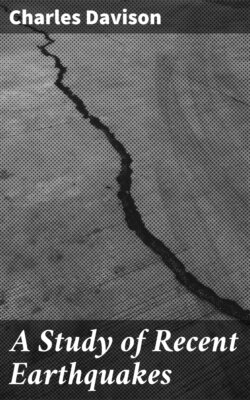Читать книгу A Study of Recent Earthquakes - Charles Davison - Страница 18
На сайте Литреса книга снята с продажи.
NATURE OF THE SHOCK.
ОглавлениеIt is not easy to form any precise image of the earthquake as it appeared to the terrified witnesses within the meizoseismal area. To minds unbalanced by the suddenness of the shock and by the crash of falling houses, actuated too by the intense need of safety, the mere succession of events must have presented but little interest. The interval of two months that elapsed between the occurrence of the earthquake and its investigation was also unfavourable to the collection of accurate accounts from a wonder-loving people. Only one feature, therefore, stands out clearly in the few records given by Mallet—namely, the division of the shock into two distinct parts.
In the central district, this division is perhaps less apparent than elsewhere. At Polla, for instance, which lies close to the north-west epicentre, the first warning was given by a rushing sound; almost instantly, and while it was yet heard, came a strong subsultory or up-and-down movement, succeeded after a few seconds, but without any interval, by an undulatory motion. At Potenza, which is not far from the same epicentre but a few miles outside the meizoseismal area, the separation was more pronounced. According to one observer, the first movement was from west to east; and, within a second or two afterwards, there was a less violent shock in a transverse direction, followed immediately by a shaking in all directions, called by the Italians vorticose. Naples lies sixty-nine miles from the north-west epicentre, and here more accurate observations could be made. Dr. Lardner, well known fifty years ago as a writer of scientific works, describes the first movement felt there as "a short, jarring, horizontal oscillation, that made all doors and windows rattle, and the floors and furniture creak. This ceased, and after an interval that seemed but a few seconds was renewed with greater violence, and, he thought, with a distinctly undulatory movement, 'like that in the cabin of a small vessel in a very short chopping sea.'"
In five other earthquakes studied in this volume, the separation of the shock into two parts was a well-marked phenomenon. In the Neapolitan earthquake, the separation was so distinct that Mallet took some pains to account for its origin. He regarded it in every case as due to the reflection or refraction of the earth-waves by underlying rocks, though he does not explain why the reflected or refracted wave should be more intense than that transmitted directly. I shall refer to the subject in greater detail when describing the Andalusian, Charleston, Riviera, and Hereford earthquakes. For the present, it may be sufficient to urge that the double shock cannot have been due to the separation of the original waves by underground reflection or refraction, for then the second part should have been generally the weaker; nor to the succession of longitudinal and transverse waves, for, in that case, every earthquake-shock should be duplicated. The only remaining supposition is that there was a second impulse occurring either in the same or in a different focus.
Which alternative should be adopted, the evidence on the nature of the shock is too scanty to determine. The defect is, however, supplemented by Mallet's observations on the direction of motion; for, at many places within and near the meizoseismal area, he met with the clearest signs of a double direction. Sometimes this was apparent to the senses of the observer; in other cases, damaged buildings presented two sets of fissures. At La Sala and near Padula, the first movement was roughly east and west, the second north and south. At Moliterno, there was evidence of a subordinate shock at right angles to the chief one; in the neighbourhood of Tramutola, its direction was from about E. 30° S. In these and other cases, Mallet saw the effects of earthquake-echoes; but the underground reflection of earth-waves would give rise to the second part of the shock, not the first as at La Sala and Padula. Moreover, the secondary directions, though they are seldom recorded accurately, point nearly to an epicentre not far from Montemurro. The observations on the nature and direction of the double shock thus confirm the conclusion, derived from the distribution of the seismic death-rate, that there were two detached foci, one near Polla and the other near Montemurro.
This seems to be the best explanation of the facts recorded by Mallet. There is, however, a possible difficulty that should not be overlooked—namely, the apparently slight influence of the Montemurro focus on the mean direction of the shock (Fig. 9). At a few places, of course, the mean direction passes through both epicentres; at some others, as we have seen, one of the two observed directions points towards the Montemurro epicentre. It is not impossible, also, that Mallet, after the first few days' work, may occasionally have quite unconsciously selected and measured those fissures from the maze presented to him which agreed most closely with his early impressions obtained from the neighbourhood of Polla. But, for places nearer Polla than Montemurro (and these form the majority of those visited by Mallet), the probable explanation of the difficulty is that the Montemurro focus was not so deep as the Polla focus. This, as will appear more fully in the next chapter, would account for the comparatively great intensity in the immediate neighbourhood of Montemurro and for its rapid decline outwards; and it receives some support from an isolated reference by Mallet to two angles of emergence at Padula, one of 25° from the north, and the other of 8° or 10° in the perpendicular walls.
